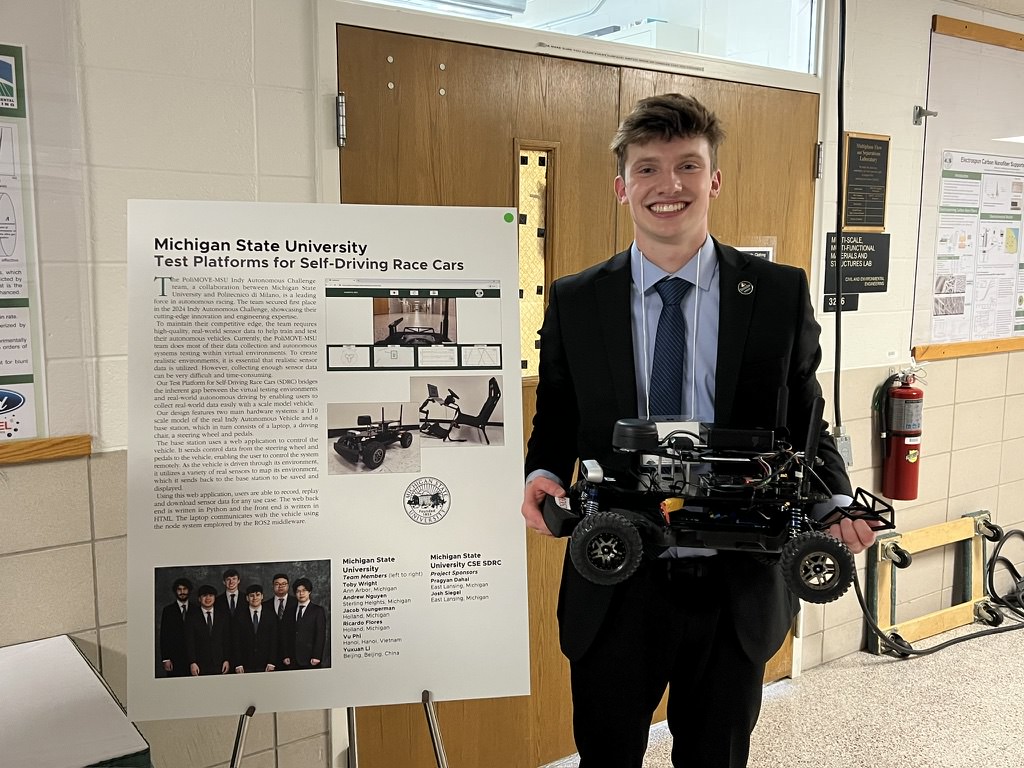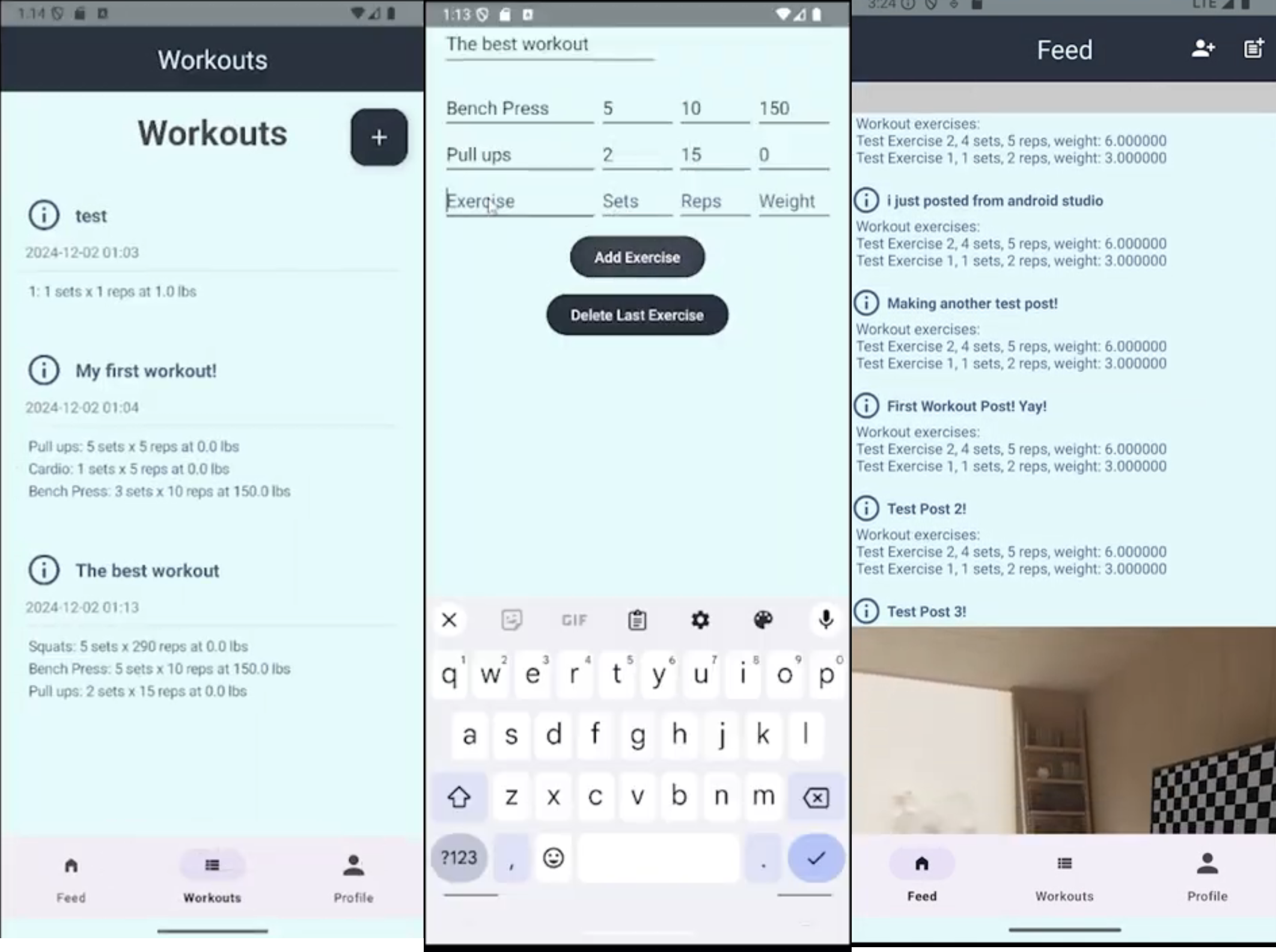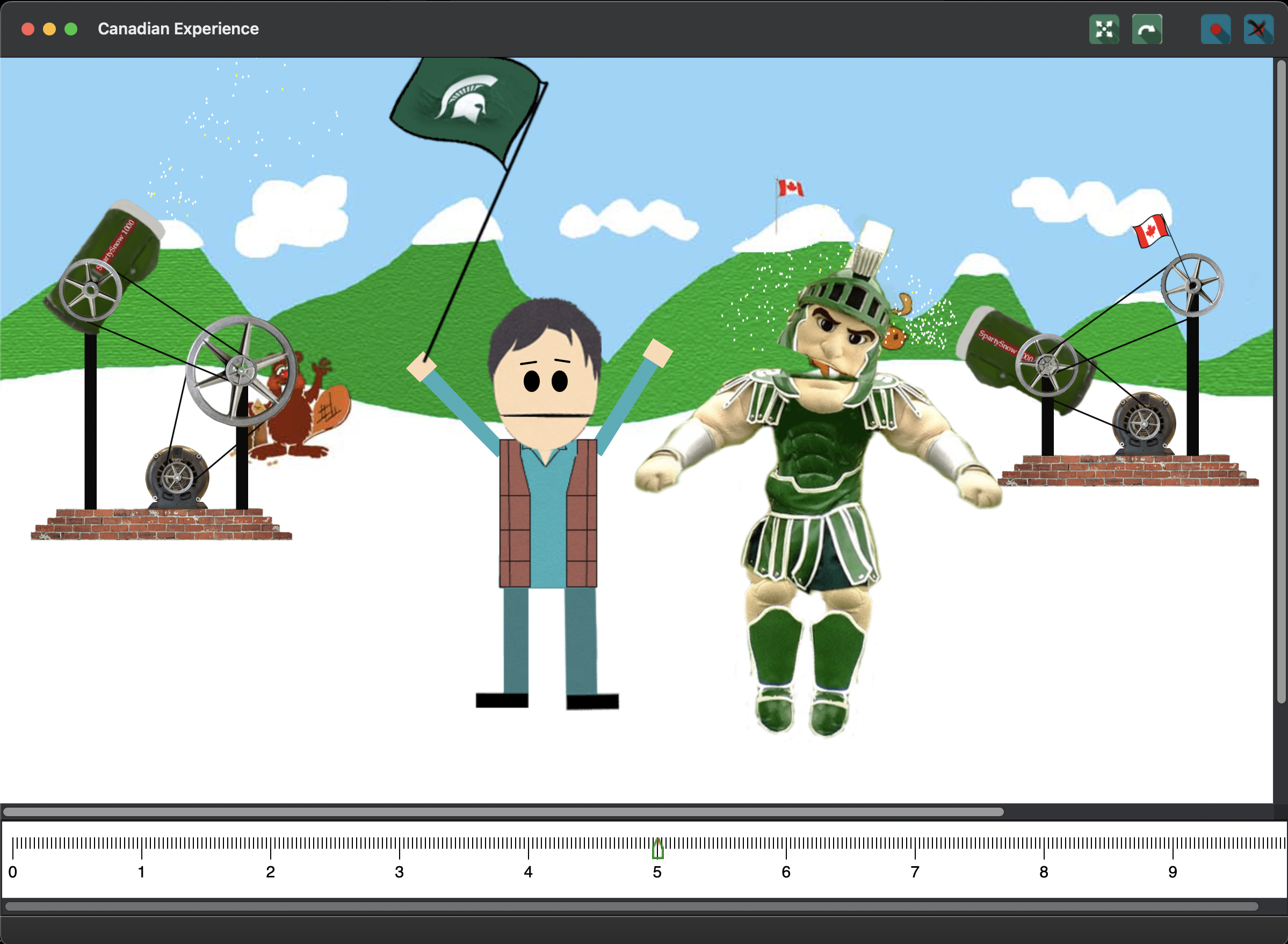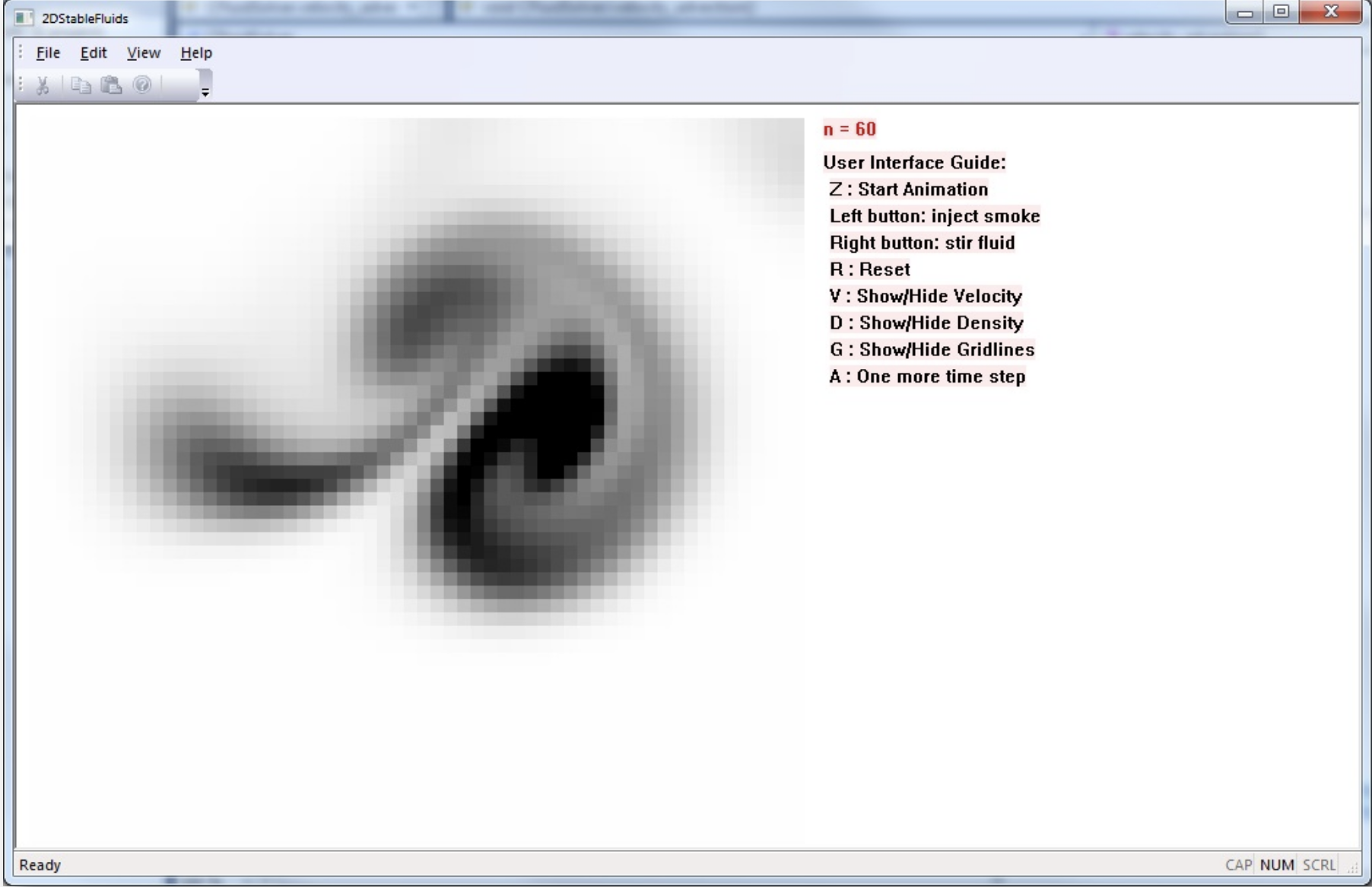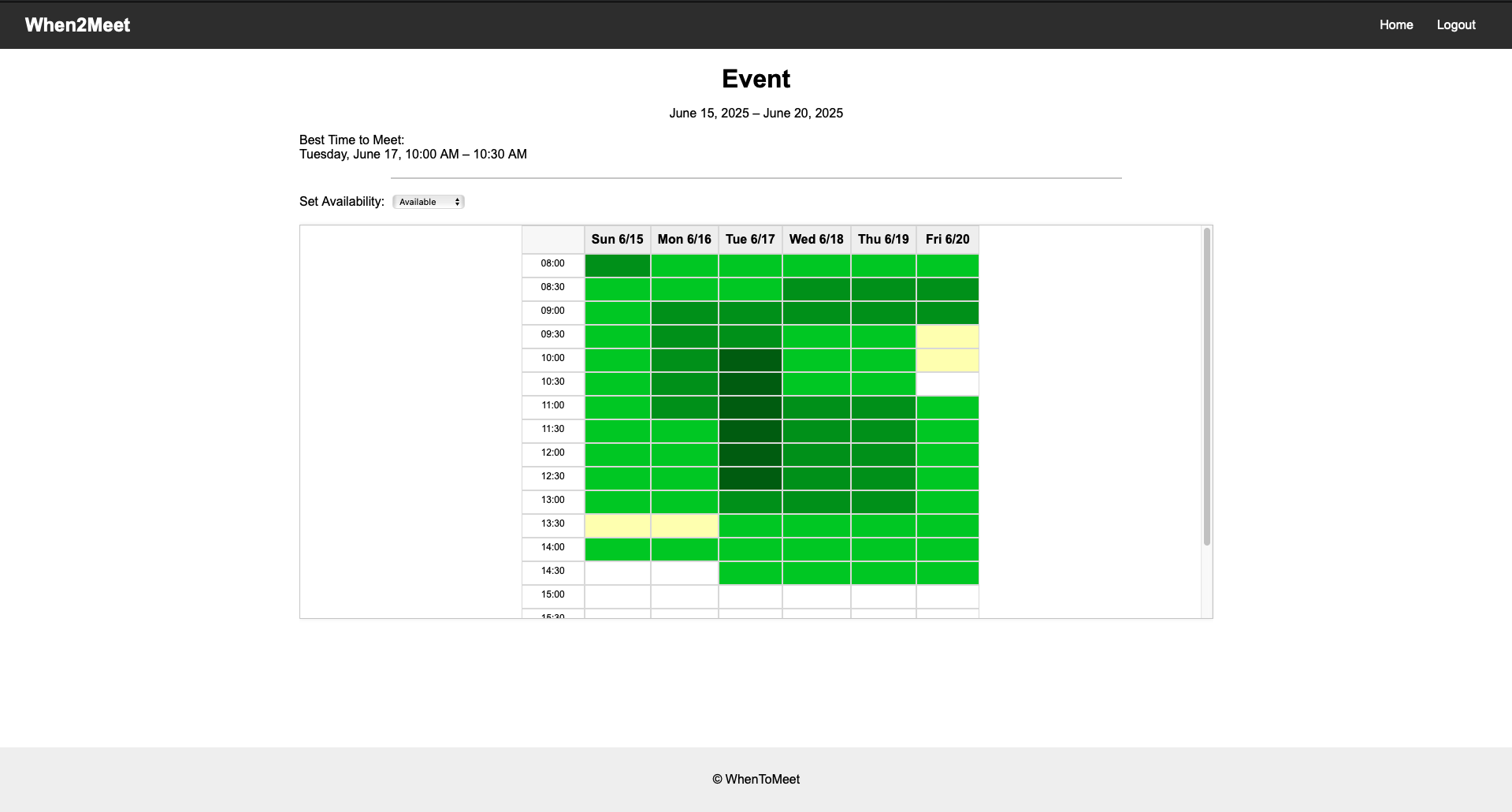Projects / Assignments:
Test Platform for Self Driving Race Cars
As part of the Computer Science Capstone Experience at Michigan State University and in collaboration with the PoliMOVE-MSU autonomous racing team, my team and I developed a 1:10th scale version of the PoliMOVE-MSU Indycar.
Our vehicle is equipped with LiDAR, GNSS, an IMU, and a depth-sensing camera. Using ROS2 and Python, my team created a software system enabling remote teleoperation via a Logitech steering wheel connected to a laptop. The system operates over a private network, allowing for real-time control, sensor data collection, and visualization on a custom frontend dashboard.
My primary responsibility was designing and implementing the software architecture for remote vehicle control. I developed multiple ROS2 nodes to manage communication between the steering wheel, laptop, and onboard hardware, including the Nvidia Jetson Orin Nano and VESC motor controller. I also supported sensor integration, provided code for teammates, and served as the primary point of contact for the client.
Click here to learn more about the projectFitfeed Android App
In a mobile app development course at Michigan State University, I collaborated with a team to develop a workout tracking and social posting application.
The app allows users to select a gym, log workouts, add friends, and share posts. Each post can include a photo, a caption, and an associated workout, enabling users to share both their activity and their progress with others.
The backend of the application is fully dockerized and includes a database that manages user accounts, friendships, workouts, and posts. My primary contribution to the project was designing and implementing the friend management feature, which enables users to add friends and view their friends’ workout posts.
2D Animation Software
During an Object-Oriented Design course at Michigan State University, I developed a 2D animation program that allows users to create, save, and replay animated scenes.
Built entirely in C++ using wxWidgets, the software uses a keyframe-based system where users can set character positions at specific points on a timeline. The program automatically interpolates movement between keyframes, generating smooth animations without requiring users to manually animate every frame.
Fluid Simulation
In a computer graphics course at Michigan State University, I developed a fluid simulation program in C++ using Visual Studio 2022.
The simulation implements algorithms for calculating density, diffusion, advection, buoyancy forces, and velocity diffusion to realistically model fluid behavior.
When2Meet
In a web design course at Michigan State University, I developed a scheduling application inspired by the popular website "when2meet."
The application allows users to create events, invite participants, and submit their availability on a shared grid. Participants are required to create accounts and login to ensure that users only access events that they are invited to. Availability is displayed using a heatmap, making it easy to visualize overlapping schedules and identify the best meeting times.
The backend utilizes WebSockets for real-time updates and a SQLite database to store event data, participant information, and availability submissions.
